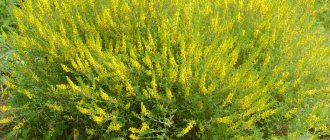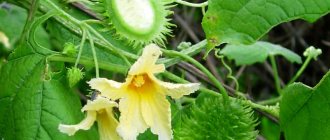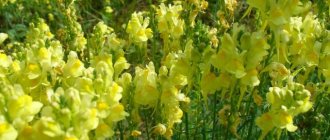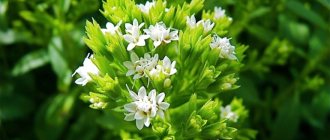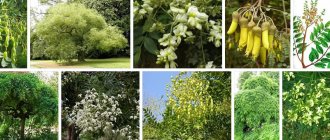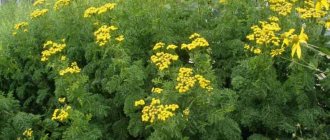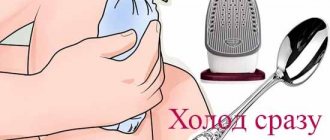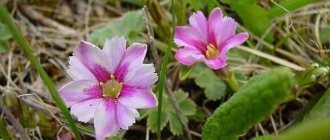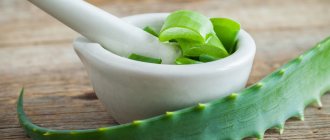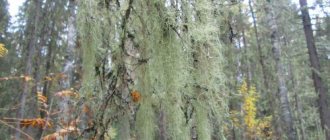What it looks like and where it grows
Common bruise (Echium vulgare) is a biennial herbaceous plant from the Borage family. It has an erect, rounded stem up to 1 m tall, lanceolate, pointed leaves with a clearly visible vein in the center. The upper and middle plates are sessile, and the basal plates, which die off during flowering, narrow into a short petiole near the ground.
The buds of the common bruise are small, numerous, and bell-shaped. They are located on short lateral branches along the entire length of the stem and form paniculate inflorescences.
The decorative period of an ordinary bruise continues throughout the summer
Before blooming, the buds have a reddish tint, and approximately on the second day after pollination they acquire a rich blue color. In early August, the plant bears fruit - small brownish nuts.
Important! The common bruise blooms only in the second year after sowing.
The herbaceous biennial grows in Europe, central Russia, western Central Asia and Western Siberia. Prefers wastelands and dry slopes, and is found as a weed on roadsides, in cultivated meadows and pastures.
Varieties
Sunflower as a honey plant
There are such garden types of bruise:
- Gray-green bruise is a perennial plant, up to 3 meters high, blooming with blue tubular flowers. Bare erect stem.
- Whitening bruise is an evergreen species of plant, reaching a height of 1 meter. It blooms with blue flowers with pink stamens.
- Italian bruise is a biennial plant, up to 120 cm high. It blooms with light purple or reddish flowers.
- Plantain bruise is very similar to the ordinary one. This is the smallest species, reaching only 30 cm in height. It blooms with blue flowers, flowering lasts a long time, and the plant emits a sweet, persistent aroma.
- Perez's blue is an evergreen species that grows up to three meters in height. It blooms with tubular pink flowers that sit tightly around the leaves.
- Bruise Wildpretta is a biennial, grows up to 3 meters in length, blooms with pink-red flowers.
Pests and diseases of raspberries: how to effectively deal with them?
Chemical composition
The beneficial properties of the honey herb common bruise are due to the chemical composition of the plant. The stems, leaves and flowers contain:
- ascorbic acid;
- choline;
- phenolcarboxylic acids;
- saponins;
- carotene;
- malic, tartaric, succinic and fumaric acids.
Also in the composition of the plant it is necessary to note cynoglossin and consolidin - poisons similar in strength and effect to curare. Common bruise is very toxic and requires careful use in strict accordance with recipes.
Beneficial properties of common bruise
When used correctly, this medicinal plant has a beneficial effect on the body. Namely:
- has an analgesic effect and stops bleeding;
- neutralizes poisons and toxins;
- cleanses the blood and restores its normal composition;
- calms the nervous system and helps with stress;
- promotes wound healing;
- prevents seizures;
- stimulates expectoration during colds and bronchitis.
You can use products based on an ordinary bruise for joint ailments, epilepsy and colds.
Decoctions and infusions with common bruise eliminate insomnia caused by stress
Methods of preparation and use
Traditional medicine offers several remedies based on an ordinary bruise. The plant can be used not only externally, but also internally, subject to careful adherence to dosages.
Tincture
For joint pain, bruises and sprains, an alcohol tincture of medicinal bruise helps well. They do it like this:
- fresh or dry grass is pre-chopped in a volume of 100 g;
- put in a glass container and pour 400 ml of high-quality vodka or homemade moonshine;
- seal and shake thoroughly;
- put in a dark place for two weeks;
- The vessel is removed daily and shaken thoroughly.
After the expiration date, it is necessary to strain the product by squeezing the cake through gauze folded in several layers. The drug is used externally to rub joints and muscles; the tincture can be applied to the skin up to three times a day.
Tincture of common bruise relieves pain and accelerates tissue regeneration
Infusion
An aqueous infusion of common bruise is used for hemorrhoids, colds, whooping cough and bronchitis. The recipe for preparing the product looks like this:
- 10 g of dried herb is steamed with 300 ml of fresh boiling water;
- leave covered for two hours at room temperature;
- strain from the sediment.
The drug is taken three times a day on an empty stomach, 15 ml. The duration of treatment depends on the specific disease and in some cases can reach three months.
Infusion of common bruise can be used to treat wounds and insect bites
Decoction
The medicinal properties of the common bruise are beneficial for coughs, nervous disorders and joint ailments. Traditional medicine offers the following recipe:
- 5 g of dry raw material is brewed with hot water in the volume of a glass;
- simmer over low heat for ten minutes;
- remove from the stove and strain.
We recommend reading: Medicinal properties of tzmina (immortelle) herb and contraindications
You are allowed to take the product 30 ml three times a day.
A decoction of a cough bruise can be used as a gargle.
Baths, lotions
For rheumatism, arthritis and radiculitis, baths with the addition of a decoction of bruises have a good effect. The medicine is made as follows:
- 300 fresh or dried herbs are poured into 10 liters of water in a large enamel bucket;
- heat until boiling and immediately turn off;
- leave covered for four hours;
- pour through folded gauze into a filled bathing container.
You need to take a bath with a water temperature of about 37 °C for at least 15 minutes. The procedure is carried out before bedtime, and the course of treatment should take ten days.
The healing properties of the bruise are also used as lotions for bruises and skin irritations. In a decoction prepared according to a similar recipe, moisten clean gauze and apply to the affected area for half an hour.
When used externally, a common bruise relieves pain and inflammation
Treatment of rheumatism with honeydew decoction
For rheumatism, joint damage, inflammatory processes in cartilage and bone tissue, regular intake of a saturated decoction is recommended. A home remedy will relieve severe pain, restore mobility to the affected limbs, and stop the spread of inflammatory processes.
Article for you:
Medicinal and beneficial properties of Pallas's milkweed and its use in traditional medicine
Finely chop the herb (if dry plant materials are used, carefully grind into crumbs). For 20 gr. plant mass will need 300 ml of boiling water. Place the container in a water bath and simmer with the lid on. After removing from the water bath, leave to cool. Strain after an hour.
Use the product three times a day. Dosage – 15-20 ml. Use the product for three weeks. After a break (1-2 weeks), take another course. It is recommended to treat joint diseases and rheumatism in a comprehensive manner - by taking the decoction orally, rubbing the painful areas with a tincture based on lungwort.
Use in folk medicine
An ordinary bruise, when consumed according to prescriptions, does not cause harm to the body, but helps relieve unpleasant symptoms and alleviates the course of chronic ailments. Traditional medicine offers several proven algorithms.
For wounds and bruises
For cuts, scratches and bruises, compresses with an infusion of an ordinary bruise have a good effect. The drug is made like this:
- 5 g of herbs and dried flowers are poured into a glass of water;
- leave under the lid for three hours in a warm place;
- passed through cheesecloth for filtration.
In the prepared warm infusion, moisten a bandage or a piece of cloth and apply it to the damaged area for 2-3 hours. The healing components of the plant penetrate the tissues through the skin, soothe pain and accelerate healing.
For epilepsy
An infusion of common bruise improves the functioning of the nervous system, has an anticonvulsant effect and helps reduce the frequency of seizures in epilepsy. For medicinal purposes the following infusion is prepared:
- 8 g of dry herb is poured with 300 ml of fresh boiling water;
- keep the product closed for three hours;
- filter.
The infusion is taken in a large spoon three times a day. It is recommended to consume it on an empty stomach.
For abscesses and boils
For purulent inflammations of the skin, a paste of fresh leaves of the common bruise has a good effect. They do it like this:
- several leaf plates are thoroughly washed in cool water;
- grind with a mortar or grind in a blender until smooth;
- the resulting raw material is wrapped in folded gauze.
The compress is applied to the ulcers for 1-2 hours. An ordinary bruise will relieve inflammation and cope with bacterial processes.
Attention! After grinding the leaves of the plant, the blender or mortar must be thoroughly washed.
For hemorrhoids
A water infusion of bruise roots helps with hemorrhoids. Traditional medicine offers the following recipe:
- 10 g of dry roots are finely chopped with a knife or crushed using a blender;
- the plant mass is steamed with 200 ml of boiling water and stirred;
- leave covered for an hour;
- pass through cheesecloth and squeeze out the mass at the bottom of the container.
The infusion is taken 20-25 times a day. Between doses of the drug take breaks of 2-4 hours. An ordinary bruise relieves pain from hemorrhoids, stops internal bleeding and promotes the resorption of nodes.
Treatment of hemorrhoids with infusion of bruise is carried out in weekly courses with similar breaks
When coughing
The expectorant properties of the common bruise promote recovery from bronchitis and whooping cough. The following remedy is prepared for treatment:
- 10 g of dry plant is crushed and poured with a glass of hot water;
- keep the closed container in a warm place for three hours;
- filter the drug from the sediment.
You need to take the drug three times a day with a large spoon. The use of the infusion is continued until the condition improves, but no more than ten days in a row.
For stress and neurosis
The calming properties of the infusion of bruise are used for anxiety disorders, a tendency to depression and poor sleep. The recipe for preparing the drug looks like this:
- common bruise grass is crushed in a volume of 10 g;
- pour the raw material with 300 ml of hot water in a glass container;
- wrap the vessel and leave it in a dark place for two hours;
- When ready, strain.
We recommend reading: The use of reed panicles in folk medicine: medicinal properties, contraindications, photos
The infusion is taken 15 ml three times a day on an empty stomach. The duration of treatment is selected individually, but in general it is recommended to use the product without interruption for more than ten days.
For arthritis and arthrosis
The medicinal properties of the common bruise soothe the pain of arthritis, gout and sciatica. In case of exacerbations, you should use the herbal infusion externally, in which case the plant will have a healing effect faster.
The joint treatment product is prepared as follows:
- 5 g of dried herb is crushed and poured with a glass of boiling water;
- keep under the lid at room temperature for two hours;
- filter the sediment remover.
The finished infusion is used warm - a piece of clean gauze is moistened in it and applied to the sore joint. You need to keep the compress for three hours.
Applying compresses to an ordinary bruise is allowed up to four times a day
For bites
The healing properties of the common bruise help with insect, scorpion and snake bites. The plant not only relieves irritation and itching, but also has an antitoxic effect. The product for external use is done as follows:
- dry roots of the medicinal herb are crushed in a volume of 5 g;
- pour the raw material with a glass of dry white wine;
- Bring the solution to a boil over low heat;
- simmer with stirring for five minutes.
Remove the finished broth from the heat and leave for another ten minutes, after which it is filtered. The product is applied to the bites with lotions for 1-2 hours until the unpleasant symptoms disappear.
For rheumatism
For rheumatism, a decoction of common bruise added to a bathtub has a good effect. The healing solution is made according to this recipe:
- dry grass is crushed in a volume of 300 g;
- 10 liters of pre-prepared boiling water is poured into a large enamel container;
- cover the bucket or pan with a lid and leave for four hours to infuse.
The finished product, when cooled, is poured into the bath and diluted with ordinary hot water until the container is filled. Immerse in medicinal liquid for 15-30 minutes in the evening. Baths are especially beneficial during exacerbations of the disease, as they allow you to relieve pain and relax before going to bed.
Bruise tincture against joint pain
It is recommended to use tincture of bruise against severe joint pain and inflammatory processes. A home remedy will easily eliminate painful signs while simultaneously triggering the regeneration of the affected areas.
Alternative medicine warns that the most effective treatment will be if you start using herbal medicine in the early stages, avoiding complications. In this case, it will take only a few days to eliminate the unpleasant symptoms. Step by step recipe:
- Cut honeydew greens (100 g) into small pieces.
- Place the herbal mixture in a glass jar.
- Pour in pervach and good vodka (400 ml).
- Seal and shake the contents of the container thoroughly.
- Leave for two weeks, during this time periodically shake the jar.
- Strain, gently squeeze the cake through a gauze cloth folded in 3-4 layers.
Use the tincture to rub painful joints. First, thoroughly rinse the dermis, completely remove any remaining moisture - the skin should be dry. Apply a small amount of herbal remedy to the affected area and lightly massage into the tissue. Repeat daily at least three times.
If the pain is too strong, the limb loses mobility, it is recommended to use a tincture for compresses. Soak several layers of bandage and gauze with a heated solution and place on the affected area.
Secure with cling film and insulate with a scarf. Leave for three hours. One procedure per day is enough - relief will come after the first use of the tincture.
Article for you:
White and yellow acacia: beneficial properties and possible contraindications
Contraindications
The medicinal properties of the common bruise plant are not always the same. In some cases, the use of products based on it is prohibited. Namely:
- during pregnancy and lactation;
- under the age of 18;
- with individual intolerance;
- with a tendency to blood thickening;
- with exacerbation of pancreatitis and stomach ulcers;
- with thrombophlebitis and varicose veins.
Ordinary bruise is consumed in small dosages in strict accordance with recipes. Exceeding safe volumes leads to the development of side effects, including nausea, vomiting, muscle paralysis and difficulty breathing. If alarming symptoms appear, you should immediately empty your stomach, take a laxative, and then call a doctor.
Collection and preparation
The buds and leaves of the common bruise are harvested for medicinal purposes during flowering, when the maximum amount of useful substances is concentrated in the raw material. The roots must be dug up in early spring or autumn, shortly before the cold weather.
An ordinary bruise retains valuable properties for three years
The prepared raw materials are laid out to dry on a baking sheet or other flat surface and left in a warm place in the fresh air. From time to time the leaves, roots and flowers are stirred. After the remaining moisture has evaporated, you need to pour the raw materials into a paper bag and store them in a place protected from light.
Collection, drying, storage rules
To prepare home remedies, the aerial part, the rhizome of the hare alyssum, is used. It is recommended to harvest plant raw materials during the flowering period - it is during this period that the concentration of useful elements increases significantly.
Place the prepared raw materials at home on racks, baking sheets or tie them into bundles. Rinse the rhizome thoroughly beforehand and cut into small pieces. Carry out drying under canopies, taking care of good air ventilation. During the process, it is recommended to regularly agitate the particles - this will prevent disputes.
Article for you:
Fenugreek - beneficial properties and contraindications
Place the herb ready for use in glass jars or plastic containers. If it is possible to store the healing component for preparing homemade medicines in a cool room with low humidity, you can package the motherboard in linen bags.
The bruise does not lose its beneficial properties for three years. Be sure to regularly check the condition of the grass - if the plant particles are damp, dry them again, you can use the oven.
Due to the presence of poisonous elements, official medicine does not recognize the medicinal qualities of hare alyssum. In order to stock up on a valuable component, you will have to independently go for a valuable plant component away from noisy roads and large industries.
